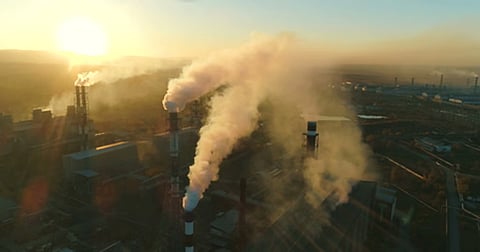

NEW DELHI: India accounts for around 70% of the global deaths attributed to air pollution, according to the 2025 Global Report of the Lancet Countdown on Health and Climate Change.
The report, prepared by the University College London in partnership with the World Health Organization (WHO), indicates that India experiences around 1.72 million deaths each year due to anthropogenic air pollution, specifically from PM2.5, which marks a 38% increase since 2010.
In comparison, the total number of global deaths related to air pollution stands at 2.5 million annually.
The report reveals that fossil fuels, particularly coal and liquid gas, are responsible for 752,000 (44%) of these deaths, with coal alone accounting for 394,000 —primarily due to its use in power plants, which contributes 298,000 fatalities.
Additionally, petrol used for road transportation contributes to 269,000 deaths.
The report also analyses the impact of wildfire smoke (PM2.5) from 2020 to 2024, which causes an average of 10,200 deaths each year, representing a 28% increase from 2003 to 2012.
The report also details the impact of polluting fuels used in Indian households, which contribute significantly to mortality rates.
In 2022, household air pollution resulted in an average of 113 deaths per 100,000 people, with mortality rates higher in rural areas (125) compared to urban areas (99).
It estimates the economic cost of premature mortality due to outdoor air pollution in India to be $339.4 billion in 2022, equivalent to 9.5% of GDP.
The report also highlights that Indians faced an additional 50% of total heatwave days in 2024, amounting to an average of 366 more hours of heat exposure, which posed a moderate or higher risk of heat stress.
This resulted in loss of labour hours, averaging 419 hours per person per year, which is over 124% higher than in the 1990-99 period. This leads to potential income loss due to reduced labour capacity, estimated at $194 billion in 2024.
The area experiencing at least one month of extreme drought each year has increased by 138%, rising from 14.1% during 1951-1960 to 2015-2024.
The rising number of heat-stress hours has contributed to increased transmission rates of diseases, such as dengue and coastal bacterial diseases like Vibrio.
The average basic reproduction number for dengue transmission from Aedes albopictus mosquitoes has doubled over the past seven decades.
The case rate of Vibrio transmission in coastal regions is 46% higher than the baseline from 1982 to 2010.
The story is reported by Jitendra Choubey for The New Indian Express
